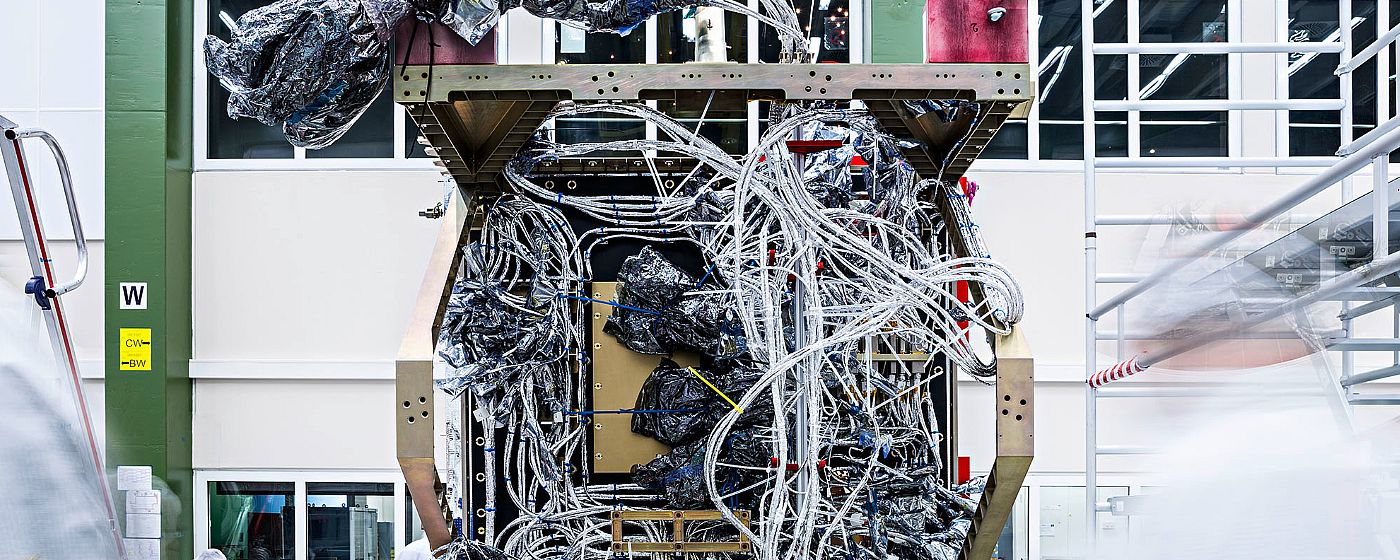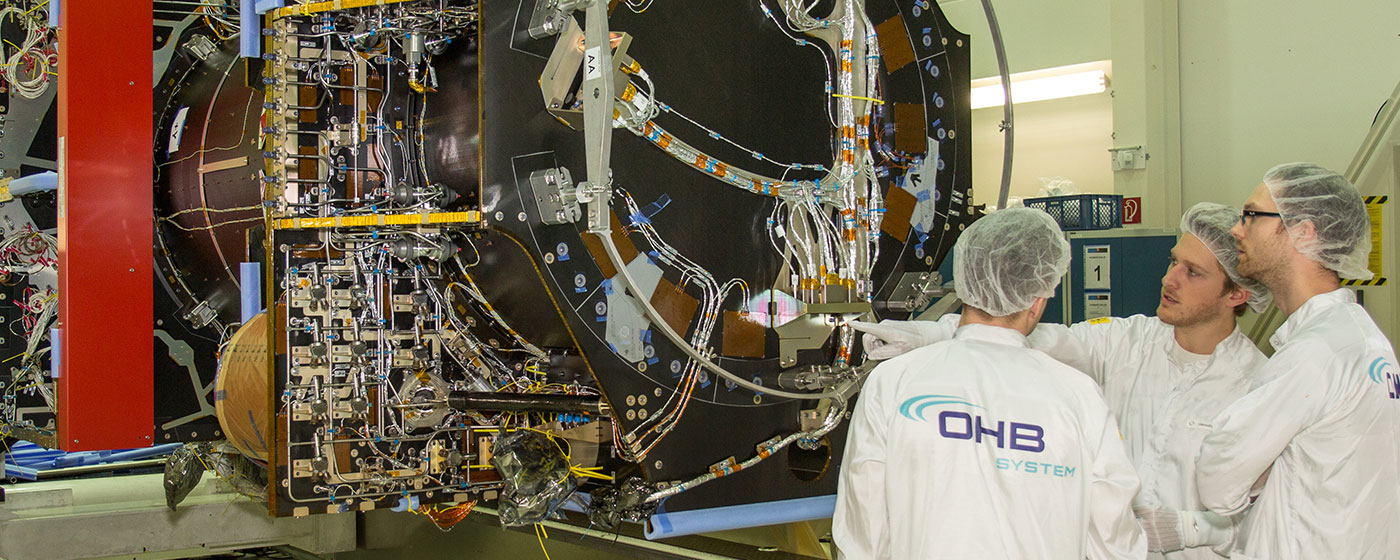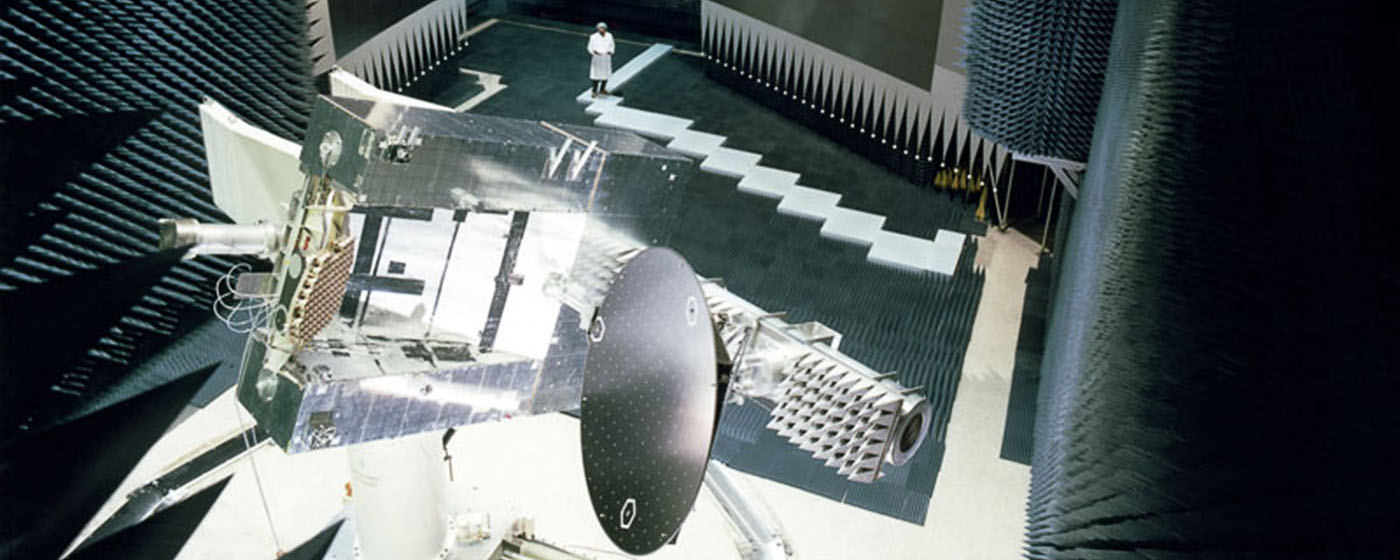System engineering is characterised by a need to think hierarchically, with planning processes that require the development of main and subsystems with differentiated detailed creation stages, from the first functional description to the last piece of wiring. System planning and documentation often involve various professionals, with a range of different tools to match. One major challenge in this respect is therefore to keep control of the big picture, while ensuring the end-to-end consistency of all the little details.
A top-down approach to system engineering normally applies in the case of complex, high-budget systems with exacting demands in terms of technology, safety and security. This is valid for anything from the design of compact systems like magnetic resonance devices to that of ATMs, but also - and above all - for the aerospace industry and defence sector.
Planning for the future on paper?
The conquest of the skies, and then of space, has always been closely associated with visions of the future and the famous cliché about thinking outside the box. It is therefore all the more surprising that the planning behind even the latest satellite and space technology, however forward-looking it might be, should still be partly based on paper documents and cobbled-together spreadsheets. The results are often passed on by hand, albeit via electronic interfaces in the best of cases, but always with administrative effort and expense.
Even digital documents are often just computer-assisted lists or graphics, without any logic or detailed information behind them. This is how Georg Hiebl, product manager at the Mobility Division of software developer Aucotec, regards the familiar term WYSIWYG (“what you see is what you get”) in the context of conventional documentation:
“What you see is, in this case, unfortunately all you get. There is no consistent thread running through the engineering process as a whole.”
Data, not documents
The company Aucotec AG has therefore developed a database-centred system with multi-level architecture. It is designed for simultaneous, multidisciplinary and individually structured engineering tasks, and also in order to meet the hierarchical needs of the top-down principle, in a clear and consistent way.
“This lets us concentrate on engineering's most precious asset: data, rather than documents”, Mr Hiebl adds.
The Engineering Base (EB) platform is the fruit of 30 years’ experience. A document in this scenario, be it a list or graphic, is just one of the possible ways of representing the information held within the central data model. It is far more than what it seems, as all the background data on the objects concerned are accessible via these documents, including items not visible there, like wiring and certain other details.
Consistent planning and recycling
Systems engineering is conventionally divided into four areas. These start with a definition of the systems and subsystems involved, before going on to designing the infrastructure, followed by determining the wiring information and, finally, detailed design of the physical wiring. The EB approach bases the information for each area on data already obtained further up the hierarchical chain, so there is no need for duplicated effort. Misunderstandings and lengthy procedures for interconnecting the efforts of the various disciplines involved are likewise omitted. This applies equally to the information-related and physical aspects, as a bidirectional online link keeps the worlds of 2D and 3D mutually matched.
“EB therefore uniquely ensures consistency and quality, while creating a ‘digital twin’ of the system’s physical wiring harness. Everything from initial preliminary planning right down to the details of the wiring concerned is covered by the digital database model, and made accessible for browsing and further editing - to everyone involved at each level of the hierarchy”, explains the product manager. This allows project-related tasks in different disciplines to be performed in parallel, without any of the false entries, process overlaps and resulting irritation that such a process might traditionally entail. All the logical elements, from simple line diagrams to detailed wiring charts, are now usable, with an end-to-end ability to pinpoint every single plug and lead. EB also leaves users free to decide whether they wish to work only with graphics, on an alphanumerical basis or with a combination of the two.
An entire system can be created using clear, independent sub-projects suitable for individual approval. Once an item has been created, it can be used in further detailed work in another sub-unit or even employed as a template for a new project.
Automatic detection of errors and changes
The automatic detection of errors at an early stage guarantees the high quality of the data concerned, which keeps details accurate for the purposes of reliable and timely scheduling. A mechanical engineer, for example, can use 2D information on the electrical system to prevent physical collisions involving the wiring harness, while a warning generated at the top of a flowchart with respect to key changes also helps to keep design data consistent further down the line. The individually configurable data-tracking system also provides an overview of any amendments made, as it supports both the interdisciplinary, simultaneous, multi-user process, while also verifying external supplier specifications.
A safe and secure base for bulk data
There are already users of the platform in the aerospace sector who have made the jump from thinking in terms of discrete documents to a data-centred approach. Aucotec organised an “Aerospace Technology Day” in January 2017, at which experts from Airbus Defense & Space, OHB System AG, Thales Alenia Space and Sysberry reported on how they are using EB to master the ever-more complex challenges of systems engineering in the context of wiring-layout design.
They are all being called on to handle enormous masses of data, and likewise all agreed that EB’s database-centred system is a vital prerequisite when it comes to fulfilling the need of systems engineering for a top-down approach and greater efficiency, including the consistently assured quality of even large masses of bulk data.
“Only a single data model open to all those involved allows simultaneous, collaborative engineering across disciplines and locations, including the boundaries between different systems," in the words of Georg Hiebl. “This means that changes now only need to be applied once.” the openness of EB allows 3D data, along with ERP and other outside systems to be closely linked to the engineering processes concerned.
Proven in practice
The big, practical advantages cited by aerospace experts include, for example, the flexibility and extraordinary adaptability of EB, whereby engineers are no longer forced to subordinate their workflow to the restrictions of a particular system. It also greatly minimises the number of interfaces and data transfers, particularly those carried out manually, which are in turn reduced by the use of automatically generated wiring diagrams. There are, likewise and finally, significant time-savings and greater efficiency to be had in terms of design, from the first flowchart to the output of final production data, and not just for satellites and aerospace systems.




